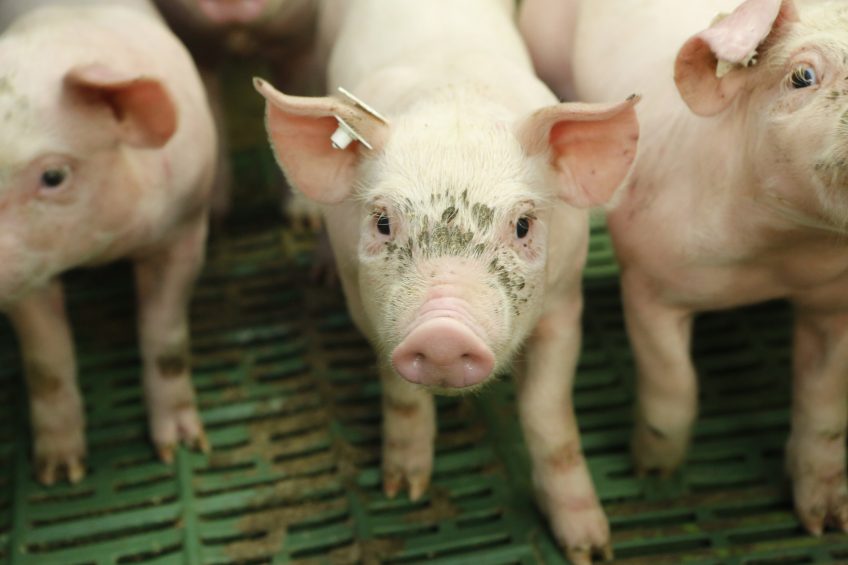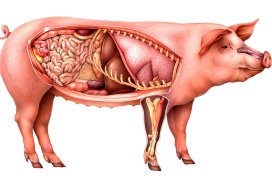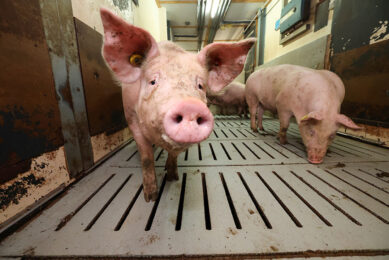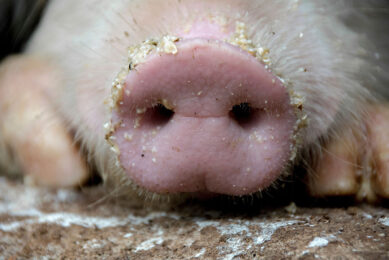Scientists describe Porcine Circovirus, type 3

American scientists have described the novel type of porcine circovirus, called PCV3, in both sows and piglets.
So far, Porcine Circovirus 2 (PCV2) attracted worldwide most attention by becoming a true plague for the pig business worldwide about 10 years ago, by affecting the pigs’ immune function, having pigs of different age suffer of different clinical signs. The infection, however, is relatively easy to overcome by vaccination and various efficacious vaccines, known on the market.
PCV1, however, although closely related to PCV2, always remained of minor importance, as it is not known to cause clinical disease.
Two studies on Porcine Circovirus, type 3
The new virus has recently been described in various recent studies by American scientific authors, that appeared in Virology Journal as well as the Journal of Virology.

Find all there is to know about pig health using Pig Progress’ unique Pig Health Tool
Study to PCV3 finding PDNS-symptoms in sows
A team of researchers from Kansas State University, Iowa State University and Smithfield described their results in a contribution to the Journal of Virology, which is a publication by the American Society for Microbiology.
They wrote that the novel circovirus was identified in sows that died acutely with clinical signs that looked like Porcine Dermatitis and Nephropathy Syndrome (PDNS). Aborted foetuses from sows with PDNS contained high levels of PCV3, and no other viruses were detected by PCR and metagenomic sequencing.
PCV3 antigens in other samples
The researchers wrote that further analysis of sow tissue samples identified PCV3 antigen in skin, kidney, lung, and lymph node samples localised in typical PDNS lesions, including necrotising vasculitis, glomerulonephritis, granulomatous lymphadenitis, and broncho-interstitial pneumonia.
These results, the researchers wrote, suggest that PCV3 commonly circulates within US swine and may play an aetiologic role in reproductive failure and PDNS. The researchers therefore state that the emergence of PCV3 warrants further investigation.
Study finding PCV3 in piglets
Further research, especially into the pathogenicity and molecular epidemiology, is also demanded by another group of researchers.
This was carried out by researchers from the Blood Systems Research Institute, San Francisco, CA, the University of California, the University of Minnesota and the Instituto Nacional de Investigación Agropecuaria (INIA), Uruguay. They studied 3 pigs that had unexplained cardiac and multi-organ inflammation. This included a piglet of 3 weeks old from a farm in Missouri, a pig of 9-10 weeks old from a farm in Minnesota and a piglet of 19 days old from a farm in South Dakota.
They described how in all 3 cases they characterised the genome of a new circovirus (PCV3) with a replicase and capsid proteins showing 55 and 35% identities to the genetically-closest proteins from a bat-faeces associated circovirus and were even more distant to those of porcine circovirus 1 and 2.
Co-occurrence with other pig viruses
The researchers wrote: “Common microscopic lesions included non-suppurative myocarditis and/or cardiac arteriolitis. Viral mRNA was detected intralesionally in cardiac cells. Deep sequencing in tissues also revealed the presence of porcine astrovirus 4 in all 3 animals as well as rotavirusA, porcine cytomegalovirus and porcine hemagglutinating encephalomyelitis virus in individual cases.”
The article in the Journal of Virology was authored by R. Palinski, P. Shang, F. Yuan, R. Guo, Y. Fang and B.M. Hause, Kansas State University, USA; P. Piñeyro, Iowa State University, USA; and E. Byers, Smithfield, USA.
The article in Virology Journal was written by T.G. Phan, L. Li, E. Delwart and X. Deng, attached to the Blood Systems Research Institute (BSRI), San Francisco, CA, USA. The first 3 authors are also attached to the University of California at San Francisco, USA. Other researchers are F. Giannitti, S. Rossow, D. Marthaler, T. Knutson, T. Resende and F. Vannucci, attached to the University of Minnesota. The first Minnesota author is also attached to the Instituto Nacional de Investigación Agropecuaria (INIA), Uruguay.
Join 18,000+ subscribers
Subscribe to our newsletter to stay updated about all the need-to-know content in the pigsector, three times a week. Beheer
Beheer









 WP Admin
WP Admin  Bewerk bericht
Bewerk bericht